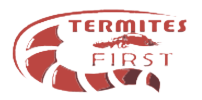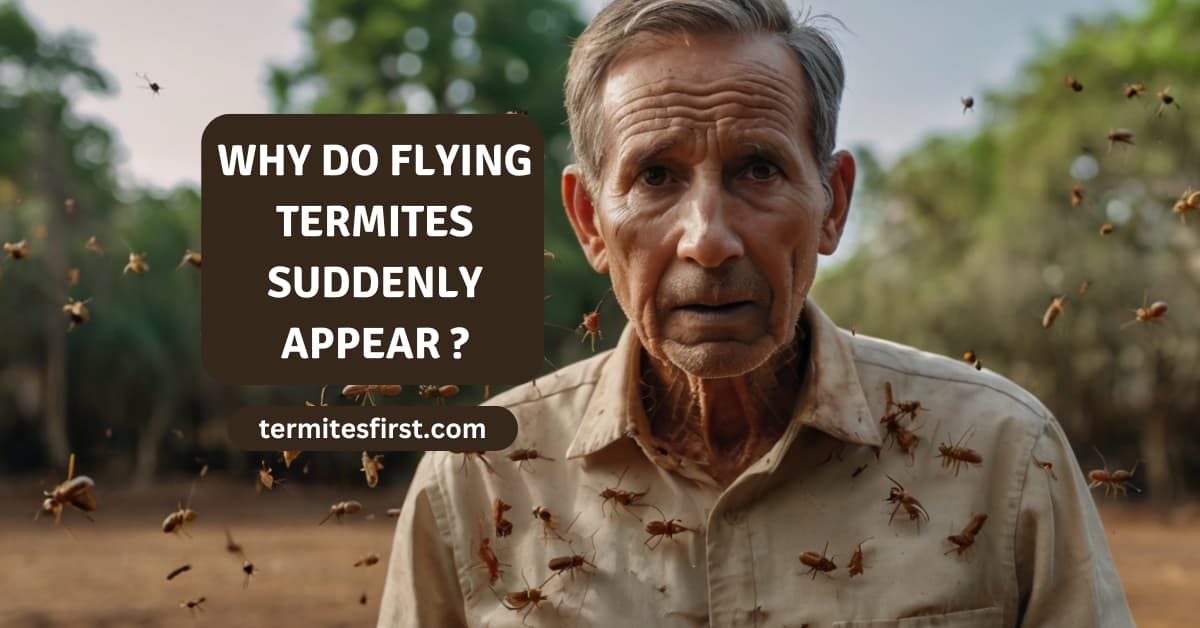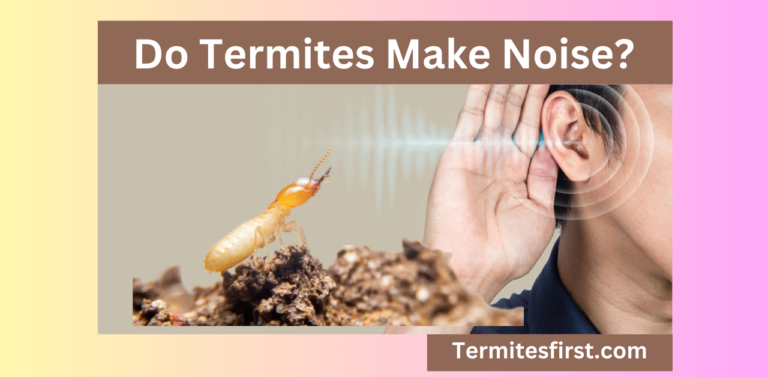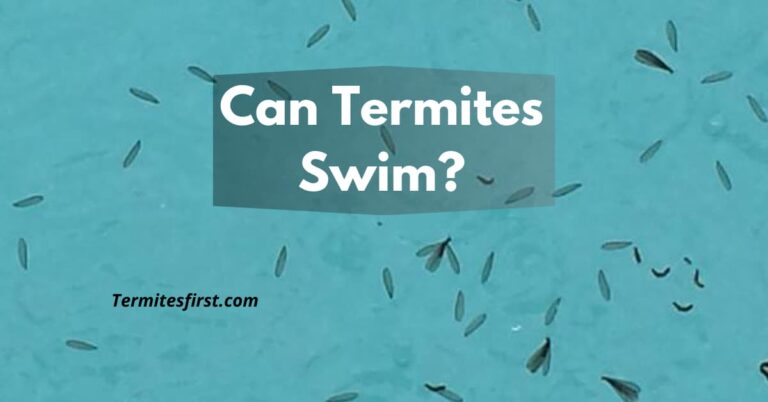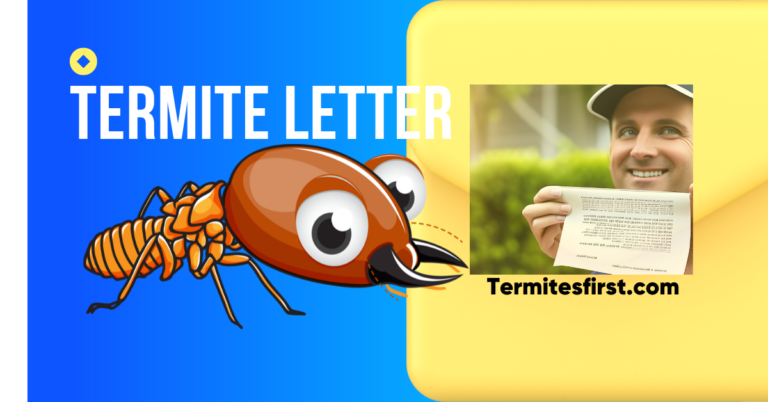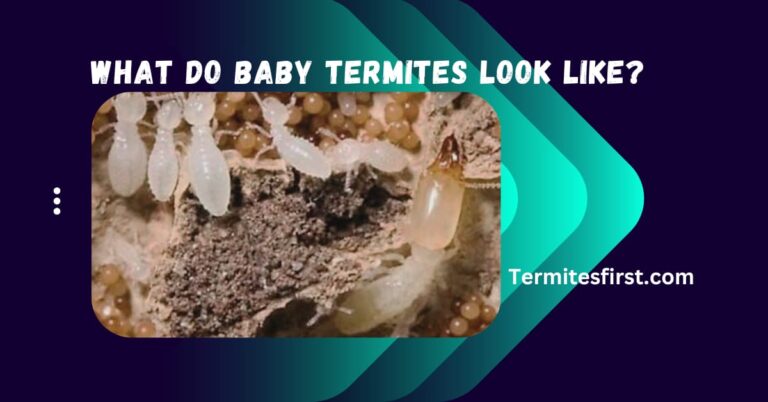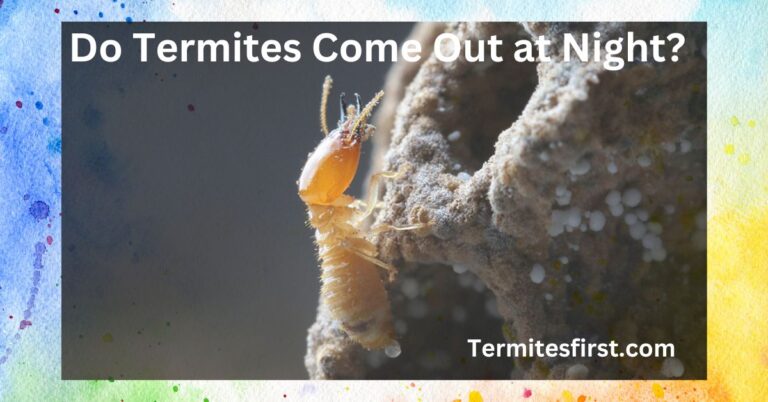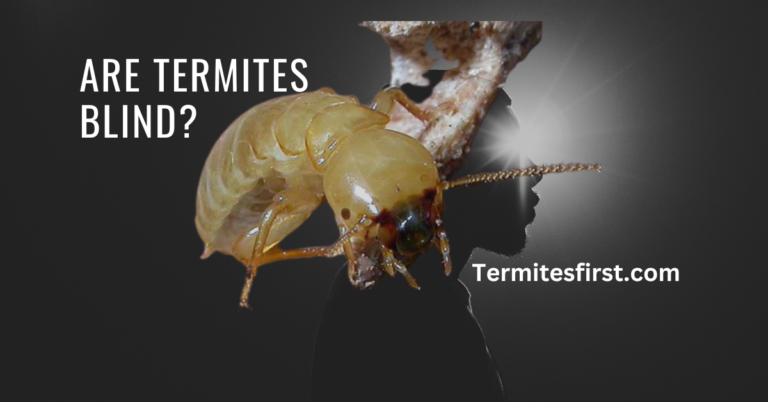Why Do Flying Termites Suddenly Appear?
So why do flying termites suddenly appear? Flying termite swarms are typically activated by certain weather conditions and environmental factors.
It usually takes warm temperatures and high humidity following a rainstorm to set the stage for a termite swarm. These conditions trigger the start of their reproductive cycle.
Termites finally erupt from their colonies in search of mates. This unexpected natural occurrence has an important function in their life cycle.
It allows them to spread and colonize new areas, so natural ecological balance can be restored.
Points to be Noted
- Flying termites, also known as alates, make up the reproductive stage of termites and play an essential role in establishing new colonies and keeping our environment healthy. Knowing when they’re most active and what they look like will make it easier to identify termites from other pests such as flying ants.
- The reproductive life cycle of termites consists of egg, nymph, and adult life stages, all of which play a part in the colony’s expansion. Identifying these stages helps to understand the pest life cycle and reproductive behavior for termite colonies, highlighting the importance of the adult stage and reproductive behavior.
- Flying termites tend to emerge when environmental conditions are just right, generally during the mating season where warmth and humidity are present. Swarming behavior is crucial for colony expansion and genetic diversity.
- Among natural conditions, warm temperatures, high humidity, and specific rainfall patterns rank high as factors that trigger termite swarming. Familiarity with these circumstances can go a long way in anticipating and controlling future infestations.
- Signs of termites around your home often include shed wings, mud tubes and a hollow sound in wood. Learning to identify these signs early on can help prevent major structural damage.
- The most effective termite prevention and control combines frequent inspections of your property, use of chemical barriers, and the hiring of pest control experts. Preventive actions such as keeping moisture in check, sealing potential entry points, and storing wood away from the home are key to preventing termite infestations.
What Are Flying Termites
Flying termites, or alates, represent the reproductive stage in a termite’s life cycle. These winged termites play a crucial role in establishing new colonies and ensuring the survival of existing ones. Typically, a termite swarm occurs at specific times of the year, particularly when conditions are favorable for their mating rituals, often following a warm rain that creates optimal soil conditions for the alates to burrow and initiate new colonies.
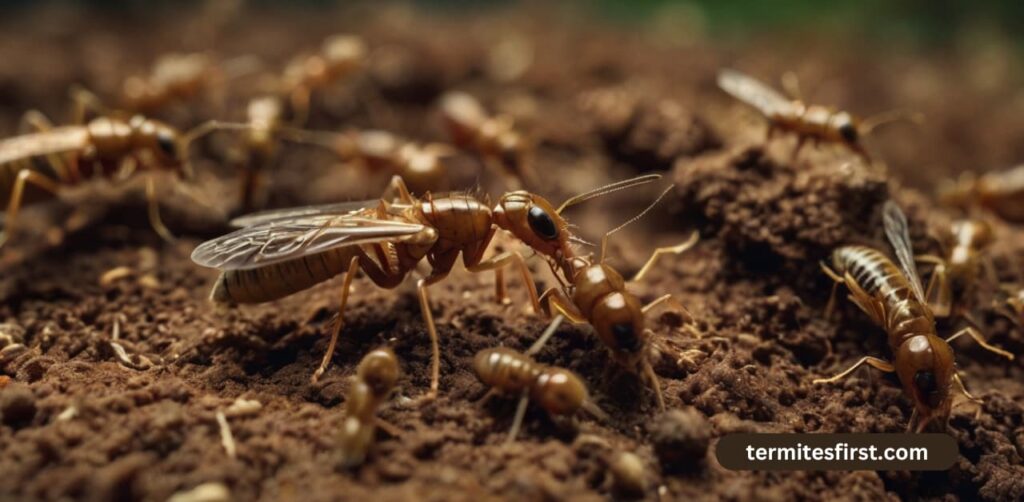
This often happens after a warm rain. The rain produces perfect soil conditions for the alates to burrow and start new colonies. Flying termites are often confused with flying ants due to their similar size and shape. They have very distinctive characteristics that set them apart.
When inspecting these insects closely, these unique features will help you distinguish flying termites from other insects. Understanding these differences is essential for effective termite control methods and managing potential infestations.
Definition of Flying Termites
Flying termites are mysterious and fascinating creatures that appear on warm sunny days in the spring and fall, mostly to mate. As winged adults, they are key players in the founding of new termite colonies. Most often, they’re mistaken for flying ants because of their similar size and winged form.
Flying termites have straight (but maybe a little bent) antennae and wings that are equal in length. They are naturally small, coming in at a quarter to a third of an inch. Their activity distinguishes them from ants, as they are most active during daylight hours.
These flying termites are the only sexually mature termites. They’re all destined to become the future kings and queens of new termite colonies. The natural emergence is part of the termite life cycle. It’s an important part of what helps them survive as a species.
Role in Termite Colony
Flying termites don’t look like much, but they are crucial to the establishment of new colonies. As primary reproductives, they are tasked with maintaining genetic diversity within termite populations. This great diversity is imperative to the resilience and adaptability of the species.
Unlike most other pests, flying termites do not swarm for no reason at all. They swarm with intent. This behavior is key during mating and founding new colonies. Environmental cues, like temperature and humidity, are what set these swarms off.
Most termite species are selective about when they swarm, and most will only swarm during daylight hours, with some opting to swarm at night. Flying termites have a short lifespan once they take their first flight. In comparison, the life expectancy of worker and soldier termites can last from 1 to 2 years.
That short life span only adds to the significance of their contribution to the circle of life. Flying termites are a sign that a colony is getting older. It typically requires three to six years for termites to develop these alates.
Even though termites are one of the most destructive pests, this process is essential for keeping ecosystems in harmony.
Life Cycle of Termites
Termites undergo three main stages: egg, nymph, and adult, with each stage being crucial for the growth of a mature termite colony. Environmental factors significantly influence their development and can lead to sudden termite sightings.
Egg Stage
The egg stage is the first phase of a termite’s life, lasting several weeks. This is typically when winged termites are laid in sheltered locations, which are carefully chosen to maximize survival chances, often within the colony’s nest area. During this time, active termite colonies thrive, as the environmental conditions and species variations greatly influence egg production.
Integral to this process are the worker termites, who protect and care for the eggs, ensuring that the nymphs have the best opportunity to develop into healthy adults. For instance, some termite queens can lay over 30,000 eggs daily! This prolific laying is crucial for the colony’s expansion and stability, particularly when considering the potential for future termite invasions.
With a queen that can live for decades, the colony is guaranteed a continuous influx of new recruits, further solidifying its growth and resilience against threats, such as sudden termite sightings or infestations.
Nymph Stage
The nymph stage is the first juvenile stage where termites start their progress toward adulthood. In this stage nymphs molt multiple times, with each molt allowing nymphs to grow by shedding their exoskeleton. This process includes growing a new soft exoskeleton underneath the old hard one, making it possible to grow to a new size.
Nymphs are nymphs that act as adult workers and are essential to the colony, often taking on tasks such as foraging and nest upkeep. They’re incredibly resilient. Based on environmental signals such as food sources and the needs of the colony, these nymphs can mature into workers or aerial reproductive termites known as alates.
This flexibility allows the colony to adapt to the surrounding environment, creating the most advantageous structure for survival and growth.
Adult Stage
In the adult stage, termites morph into fully functioning members of the colony. This stage includes the caste system with a division of labor among workers, soldiers, and reproductive swarmers. Workers and soldiers typically survive one to two years while constantly constructing and protecting the nest. The presence of winged termites is significant during this time, as they play a crucial role in the colony’s reproduction.
Reproductive alates are easily recognizable, with a much darker body and two pairs of wings. They are vital for colony reproduction, leaving the colony to mate and establish new colonies, which can lead to unexpected termite infestations. Flying termites also tend to die soon after their first flight, highlighting the risks involved in their swarming activity.
The termite queen’s long life makes the colony’s output of new queens a more dependable business. Adult termites are crucial in ensuring the colony stays healthy. When shortages occur, soldiers can be called into action and develop into workers or reproductives, further complicating the potential for a termite problem.
Their flexibility is what makes them so dangerous. A colony can take three or four years to reach maturity and cause serious destruction, leading to significant termite activity in the surrounding area.
Why Flying Termites Appear
Flying termites, known as swarmers, are a pest that is often overlooked, until they suddenly appear in a mass mating fest. This time is very important to their life cycle. That’s because it’s when these insects swarm in order to mate and start new colonies.
During their typical mating season in springtime, when temperature and humidity levels change, they become active indoors. These modifications are critical because they send the termites into a reproductive swarm, greatly enhancing their likelihood of pairing up successfully. This behavior is not arbitrary, it’s a response to environmental cues that signal ideal conditions for reproductive success.
For termites, swarming behavior is more than just an annual annoyance—it’s a survival strategy that allows their species to thrive and spread. The timing is finely tuned to perfect environmental conditions. This combination provides termites with an optimal environment in which to survive and reproduce.
Environmental factors are the most common catalyst for swarming termites, including flying termites. Temperature, humidity, daylight, and rain are key triggers. When all of these conditions come together, termites swarm in great numbers, and can sometimes cause an unexpected appearance.
For instance, after a warm rainstorm, you may see termites swarming, especially on a sunny day. These weather patterns create the ideal conditions for nuptial flights. During these flights, termites take to the air in search of a mate. It’s incredible to witness how dramatic even minor shifts in weather patterns can cause these layoffs.
Learning to recognize these environmental triggers will help you best manage termites. Understanding these patterns can assist in anticipating and mitigating termite activity, giving you a tactical edge in combating infestations.
Flying termites, or alates, leave their parent colony to establish new nests elsewhere. This process is essential for the development and survival of termite populations. Mating that takes place during these swarming events leads to the establishment of new colonies.
This process increases the genetic diversity and resilience of termite populations. As in their decision to swarm in the first place, environmental conditions once again are key to whether these new colonies will thrive. A necessary level of moisture, for example, is important for subterranean termites, which depend greatly on moist environments to survive.
Once a new colony is found, there can be explosive population growth—colonies can mature in as little as three to six years. This rapid growth can quickly make a little swarm a major termite issue if conditions are just right.
Flying termites’ presence is usually attributed to colonies in search of a new home, having outgrown their nests. Whether it’s the dry season or the rainy season, you can see flying termites. Their activity is most noticeable when the environmental conditions are optimal.
They usually fly during the day, using lights at night as meeting places. Swarming is most common in the spring, particularly after a warm rain, when the moisture content is perfect. Destructive by nature, termites can create swarms of hundreds or thousands, while others, like the Eastern subterranean termite, can swarm in the millions.
For example, drywood termites only create small swarming groups, and subterranean termites can issue tens of thousands of winged reproductives. These termites often perish soon after their initial flight. Yet their workers and soldiers can survive one to two years, ensuring the continued power and existence of the colony.
Environmental Conditions for Swarming
Flying termites, often seen in sudden termite sightings, seem to appear in swarms out of nowhere, creating an alarming sight that causes concern for many homeowners. Their emergence as termite swarmers is intricately linked to specific environmental conditions. Warmth and moisture are critical ingredients that spark these events. By learning about them, we can enhance early detection and effectively manage potential infestations.
Warm Temperatures
Great environmental conditions for swarming, such as warm temperatures and rainy weather, play a crucial role in the lifecycle of winged termites. These insects are extremely sensitive to rising temperatures, and once spring arrives, they are among the first to start their termite swarm season. When temperatures reach around 80 degrees Fahrenheit, termite swarmers are triggered, marking a period that typically lasts from March to June in many areas.
During this time, various termite species may react differently to the warmth. Some may swarm during the day, while others prefer nighttime, showcasing their unique flight patterns. The warmth is vital for their entire lifecycle and behavior, providing the energy needed for reproduction and the growth of active termite colonies. They swarm in search of new habitats to establish mature termite colonies.
On favorable winds, these swarmers can drift several hundred yards or even miles, seeking out potential sites for new colonies. This behavior is essential for preventing a termite problem and mitigating future infestations.
High Humidity
Here is another important environmental condition that promotes termite swarming. Both high moisture levels and warm temperatures are important for the survival and reproductive success of flying termites.
This is especially the case for the numerous species that are dependent on decaying wood, which naturally holds moisture. Humidity has a significant and direct impact on termite activity. Moist conditions foster rot, which in turn makes wood more attractive to these pests.
Keeping humidity levels in check is a great preventative step to avoid potential infestations. In places such as Indonesia, where humidity and warmth creates swarming conditions all year, constant vigilance is necessary. Check for excess moisture, especially in wood-heavy parts of your home.
In doing so, this proactive approach can dramatically reduce the likelihood of an infestation.
Rainfall Patterns
Rainfall patterns play a major role in determining when and how intensely a termite swarming event occurs. After rainstorms or during heavy rains, the ground becomes too saturated with water, creating the perfect environment for termites to swarm.
This is why swarmers tend to come out right after a rain, especially drywood termites. With termite swarming season coinciding with the recent surge of rainfall, the conditions have been perfect for termites to swarm into your homes.
They’re attracted by the softened, moist wood, which is why it’s so important to know local weather patterns. Homeowners should be especially vigilant for signs of termite swarming following heavy rainstorms.
Keeping an eye out for wings on the sidewalk or the sight of swarmers themselves can help you locate a new colony. When you’re proactive with these pests, you can prevent their new colonies from establishing a permanent residence in your house. This is particularly crucial in places that receive heavy precipitation.
Signs of Termite Infestation
The truth is that termites are not just a nuisance, they’re a real and serious threat to any structure. Catching the signs of infestation early can spare you thousands in repair costs and help protect the integrity of the building.
Perhaps the most obvious sign that something is amiss is the appearance of flying termites seemingly overnight. Most people know these pests as swarmers, or alates. These flying termites are often noticed in swarms, which can mean that there’s a mature colony located close by.
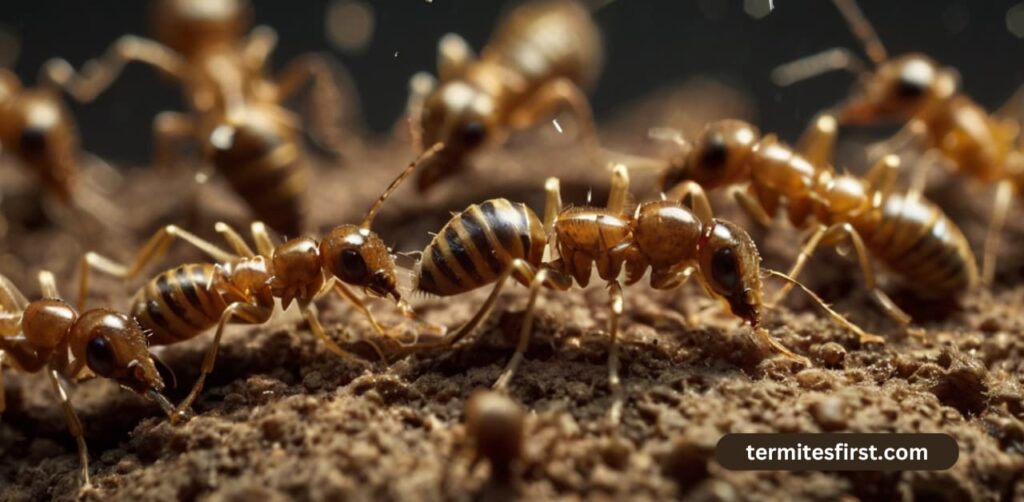
Discovering a couple dozen Formosan swarmers inside may not mean you have an active infestation. Finding thousands is a good indicator of an ongoing issue. This is important because Formosan termites, more common in one-third of Mississippi’s counties, are particularly dangerous, capable of destroying an entire home in as little as six months.
Depending on the size of the colony, swarming can last from 20 minutes to an hour, over the course of several days. It’s not immediate, either—a colony takes several years to reach the point where it can produce swarmers. Their presence is an unmistakable sign of the maturity of the colony.
Presence of Wings
Discarded wings are a sure sign of a termite infestation. Termites lose their wings post-swarming. If you notice wings around your windows, doors, or other light sources, this is often a clear indicator that you have a colony very close by.
This is an obvious sign of possible termite infestation especially if you find wings inside your home. Approximately 1 in 3 homes in the United States will experience a termite infestation.
Add checking for discarded wings to your home maintenance checklist. If you see wings, it’s a sign that termites are swarming. They further act as a warning that these pests could be seeking out new locations to set up a colony.
Mud Tubes on Walls
Mud tubes are the most important signs of termite infestation. These mud tubes offer protection and humidity for termites while they move between their colonies and feeding sites.
Discovering these tubes on interior walls or basement foundations means an established colony is likely nearby. Even if it’s too late to prevent the infestation, quick action to remove these mud tubes is important, as their presence indicates possible serious structural damage.
Shelter tubes may be one exception to the finding swarmers rule not meaning active infestation inside. If mud tubes are found, taking immediate action can prevent serious structural damage from occurring.
Hollow Wood Sounds
Termites eat wood from the inside out, so the only thing left is a hollow shell. This destruction is most commonly identified by a hollow sound when knocking on wood buildings.
Having an ear out for these noises when conducting a home inspection is key. Once you hear those hollow sounds, it’s time to take immediate action or risk incurring serious damage.
This is due to the fact that termites can do a lot of damage before they are even seen. Routine inspections and listening for these noises can help catch termite infestations early and prevent costly structural damage.
Managing Termite Infestations
In our experience managing termite infestations, including sudden termite sightings, a proactive and holistic strategy is most effective. This includes routine monitoring, targeted chemical applications, and the skill of trained pest control professionals.
Inspect Regularly
So first, let me emphasize the need for regular inspections. As a homeowner, it’s important that you routinely inspect your home for any signs of termite activity. Termites, if allowed to go unchecked, can do severe damage, and catching them in the early stages will save you a fortune in repairs.
Start with a termite inspection checklist that includes areas like basements, attics, and all wooden structures, as these are prime locations for termite swarmers to remain hidden and thrive. After heavy rains, proactive inspections become even more essential, especially during their swarming season, which begins in February and lasts through the summer months.
During this period, you may notice flying termites, identifiable by their four equal-length wings and straight antennae, swarming around your property. Their presence is a clear sign that you should take immediate action to prevent further damage from a potential termite problem.
If you spot these winged termites, don’t hesitate! The likelihood of an active infestation is high, but swift treatment can halt the damage from escalating.
Use Chemical Treatments
Chemicals are the most effective way to manage termites. There are many different options, each with their own unique advantages. Chemical treatments, such as liquid insecticides, have long been recognized for their potent, one-shot exterminations of existing termites and building protectants that lay down extensive invisible barriers around structures.
They need to be used responsibly, according to the manufacturer’s guidelines to protect yourself and to protect the environment while controlling termites. First off, it’s important to point out that these treatments aren’t a permanent solution. Regular repeat treatments are necessary to ensure long-term protection.
With termite colonies headed by queens that can live more than 30 years, it takes several years for colonies to mature. The secret is in the prevention. Consistent application is the best way to prevent these destructive pests.
Employ Professional Pest Control
There are times when you need more than a do-it-yourself approach. Using professional pest control services, such as those provided by Smithereen Pest Control, can make all the difference. Only licensed professionals have an intimate knowledge of termite habits and customized pest control strategies.
They provide detailed inspections that will find infestations lurking where an untrained eye would find nothing. Their complete treatment is more than just treating existing infestations—it’s about addressing them while taking steps to prevent future infestations.
Once you know how to identify long-winged bugs, you’ll be able to tell if you’re looking at termites or not. This distinction is important for deploying targeted treatment strategies.
Prevention Tips for Homeowners
In no time, you’ll see that flying termites are truly a pain. Homeowners can take a few basic measures to prevent them. By becoming familiar with these prevention tactics, you can spare yourself a world of trouble. Not to mention keeping your bank account safe from the $5 billion in damages termites inflict every year nationwide.
Here’s how to protect your home from hazards the smart way.
Reduce Moisture Levels
Before anything, moisture should be one of the first things to address. Termites are attracted to moisture, so reducing humidity levels and damp areas around your house is an easy step to start with. Plan to repair leaks as soon as you find them and to drainage features on and around your property.
In addition, adequate ventilation in crawl spaces and attics is important. It helps to keep the air circulating and dry, which is less inviting to these pests. Setting up dehumidifiers may further restrict indoor moisture. By preventing excessive moisture, you’re taking a big step towards preventing a termite infestation.
Seal Entry Points
Coming in second is sealing off their entrances. Since termites can fit through the smallest openings, it’s important to regularly check your home for these weaknesses. Use caulk and weather stripping to seal gaps around doors, windows, and foundations.
Regular maintenance is important too, as it’s up to us to make sure these seals hold up in the long run. By sealing these entry points, you’re taking a proactive step to prevent termites from entering your home and causing damage.
Store Wood Properly
Proper storage of wood materials is key. Since termites are drawn to wood, proper storage will keep them from claiming your home as theirs. Store firewood and building materials off the ground and at least 5 feet from your home.
This reduces the likelihood of termites finding a new meal. Storing wood in dry, well-ventilated locations helps to keep the wood dry and less attractive to termites. By adhering to these simple guidelines, you can significantly reduce your risk of incurring costly termite damage.
It’s going to be very important to take immediate action. We recommend that any homeowner who suspects an infestation should call Smithereen Pest Control right away. They provide organic pest control treatments, so they’re a great long-term, sustainable option for keeping your home pest-free.
Put termite bait stations every 10-15 feet around your home’s perimeter. This makes it a formidable barrier to these nasty pests. With Smithereen Pest Control, you get a detailed inspection and proper identification.
This proactive approach stops future infestations before they start and offers the most effective termite prevention and control strategy available.
Conclusion
Flying termites suddenly appear when the time is right. It can indicate a warning to inspect your own home for infestations. Learning about their life cycle and habits will help you identify them before they cause extensive damage. Watch for signs such as discarded wings or mud tubes. These clues indicate that it’s time to take action. To avoid damage to your home, make termite prevention a priority. Repair water leaks, remove organic debris, and seal entry points as much as possible.
These few easy measures go a long way in preventing termites and saving your home from this costly infestation. If they’ve already moved in, having a pro come out right away will nip the issue in the bud. Don’t leave it till the last minute. Being educated and prepared helps keep your home safe, healthy, and pest-free. Ready to defend your home or business? Knock those flying termites out of the sky today.
Frequently Asked Questions
Reproductive termites, also known as winged termites or termite swarmers, are the only termites that fly to establish new colonies and ensure their species survives, typically emerging during sudden termite swarms shortly after rain.
Flying termites, also known as termite swarmers, have a very short lifespan after leaving the colony, usually only a few hours to a day, as their only purpose is to mate and create new colonies.
Mating flying termites, or termite swarmers, establish new colonies, with swarming initiated by warm temperatures and high humidity, often following rainfall.
Termite swarming occurs when warm temperatures, humidity, and recent rain combine to trigger reproductive swarmers to leave their mature termite colony. This creates a perfect environment for attracting many termite species, mating, and starting new colonies.
Mud tubesDiscarded wingsDamage to wood structuresHollow sounding wood
If you see any of these signs, get the advice of a professional.
Consult a professional pest control company to identify the active termite infestation and determine the best termite control methods for effective treatment.
To prevent significant termite activity, keep wood mulch and debris away from your home, seal cracks and crevices, and fix leaks to avoid moisture buildup. Year-round, regular pest inspections can help nip sudden termite infestations in the bud.
